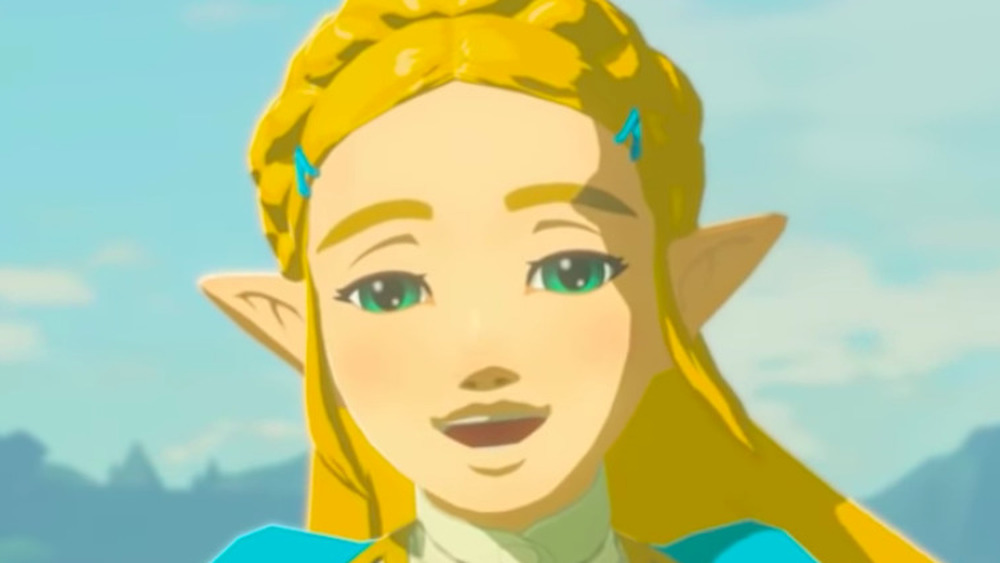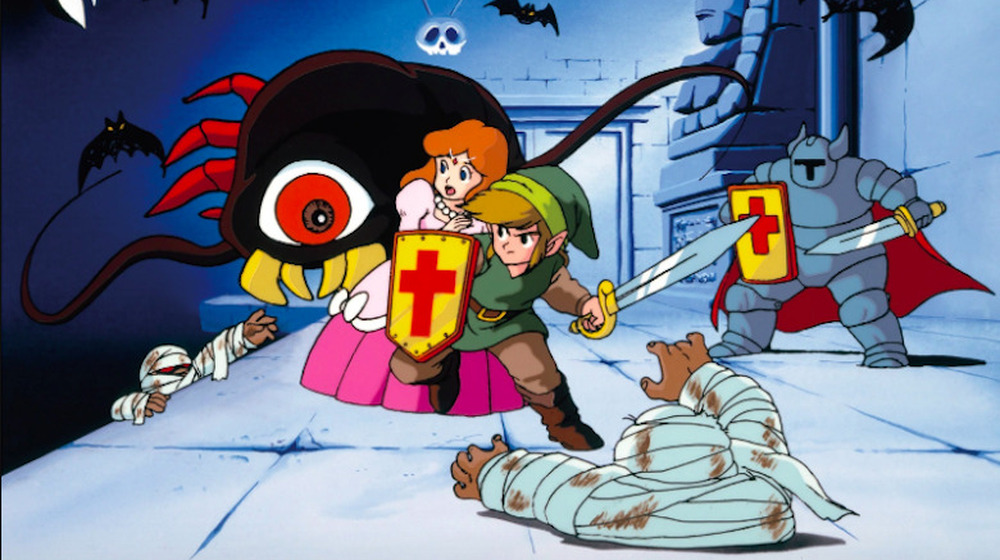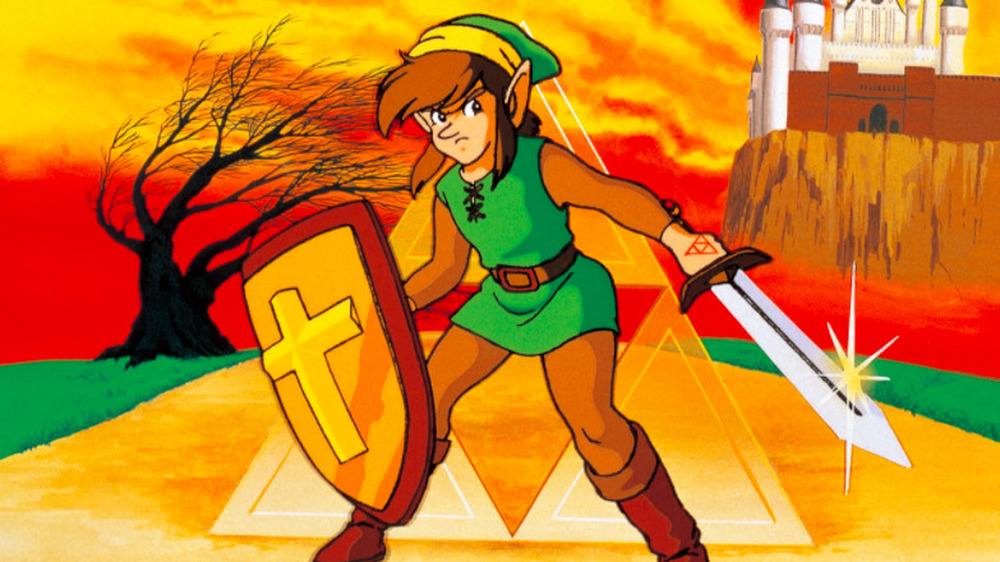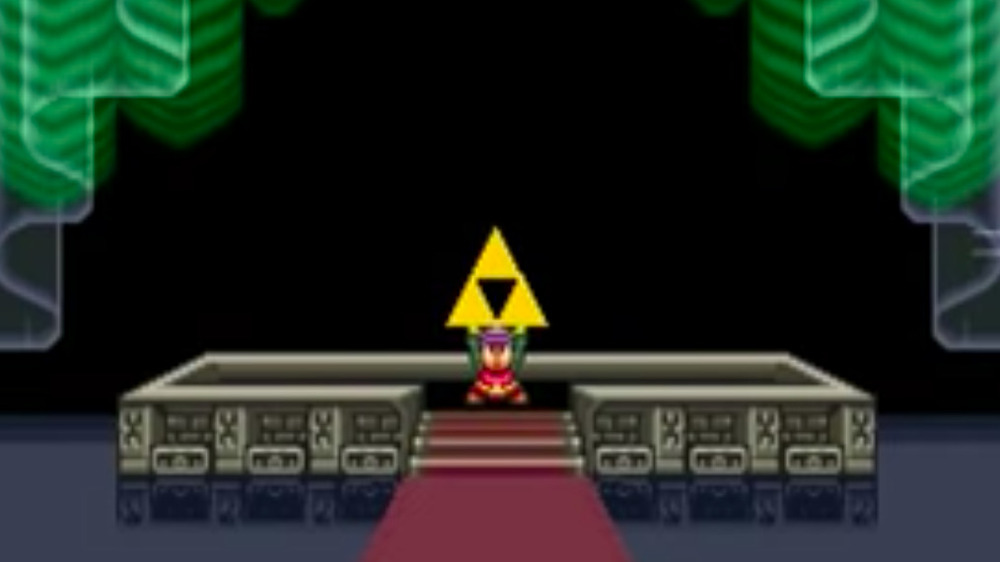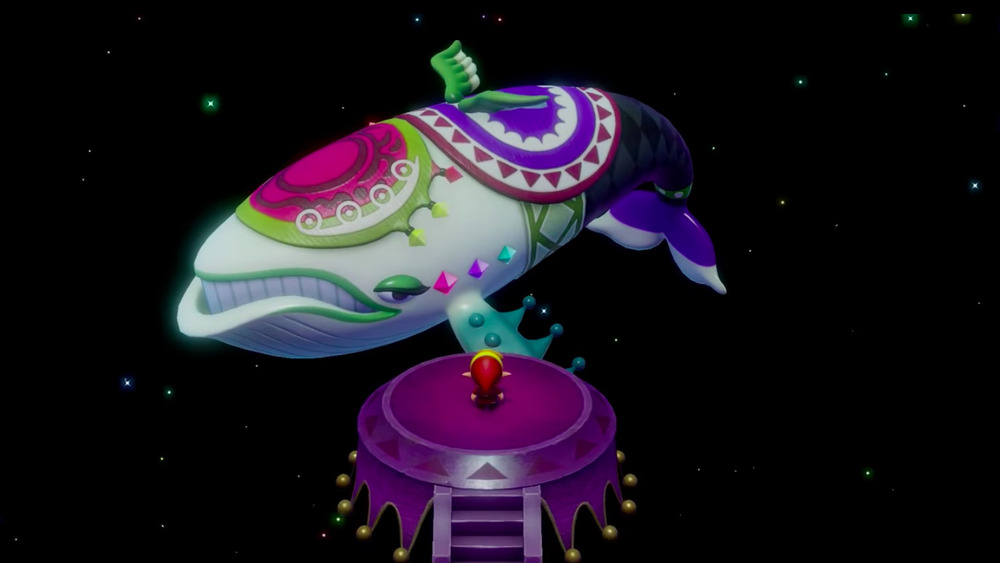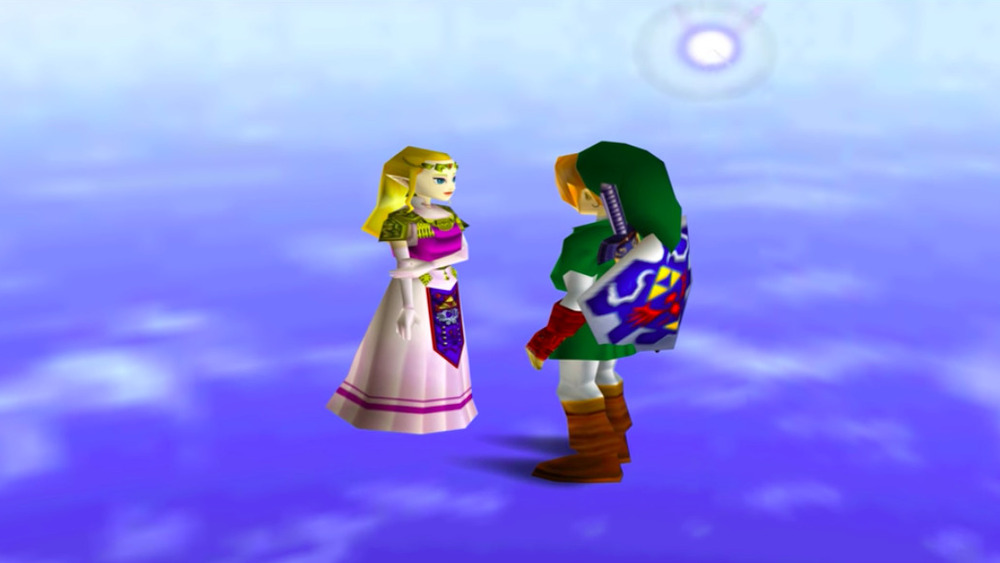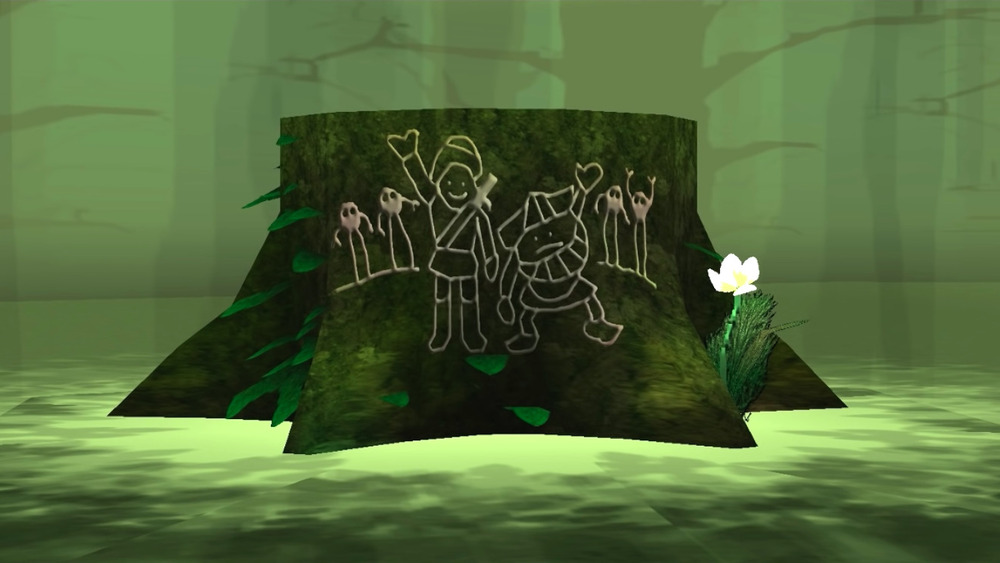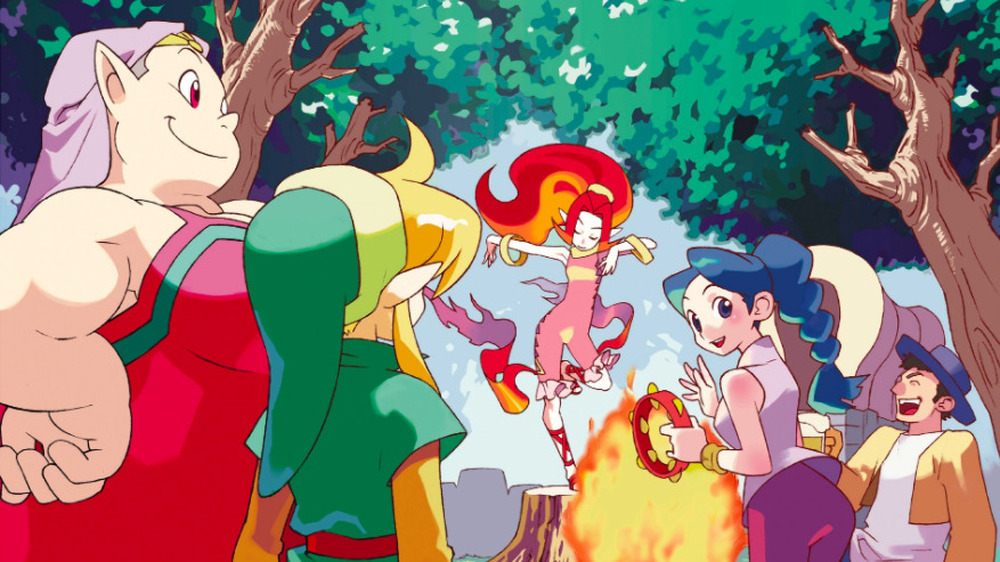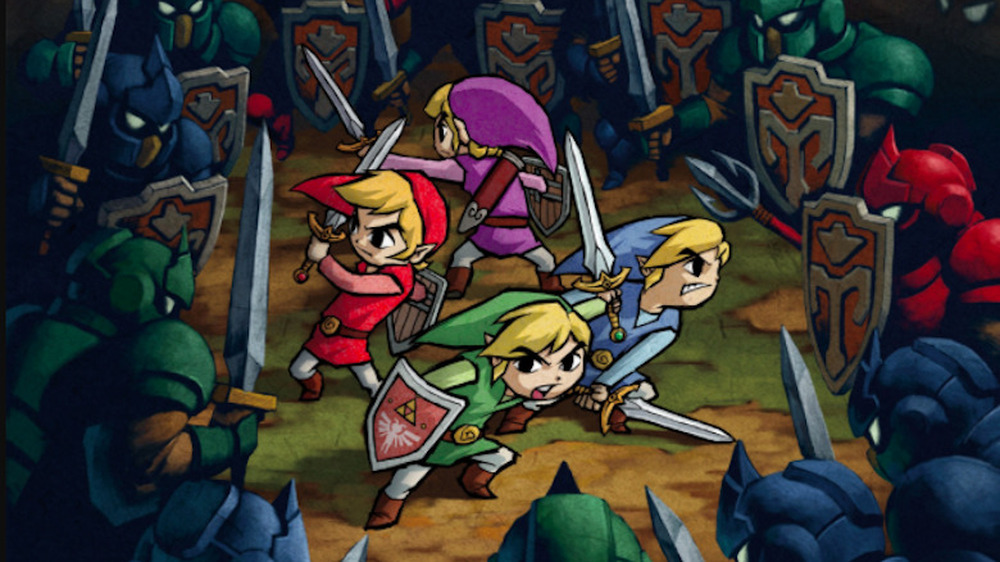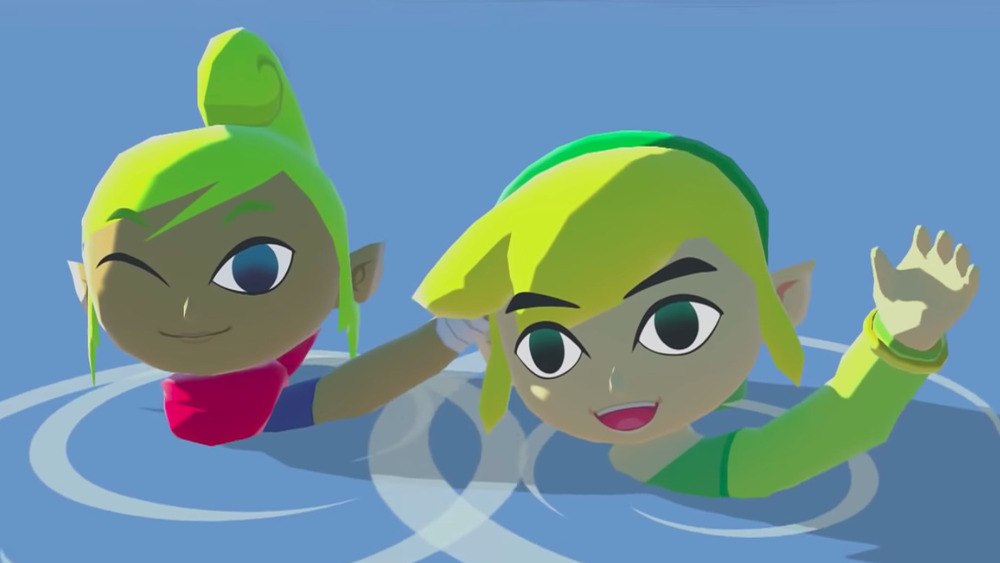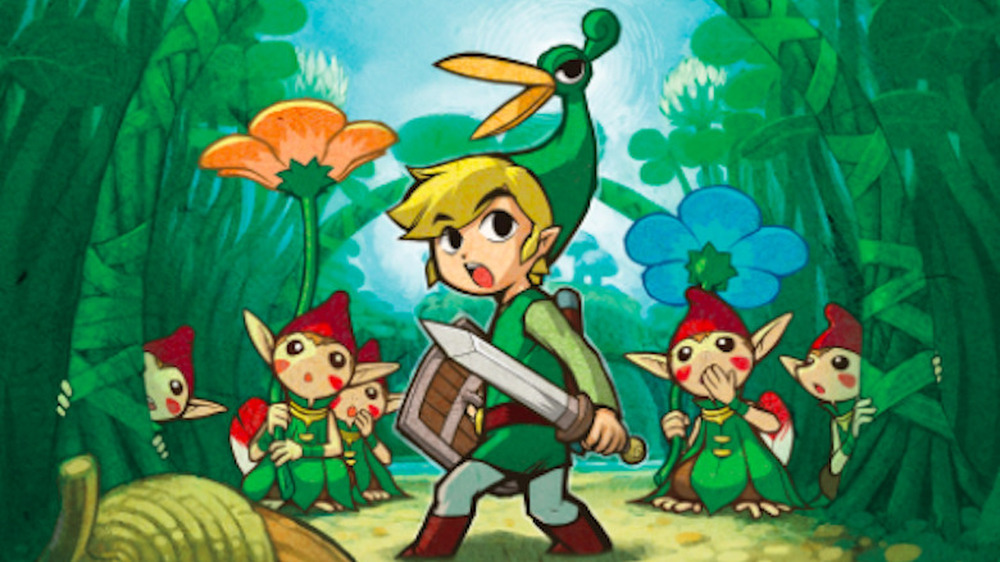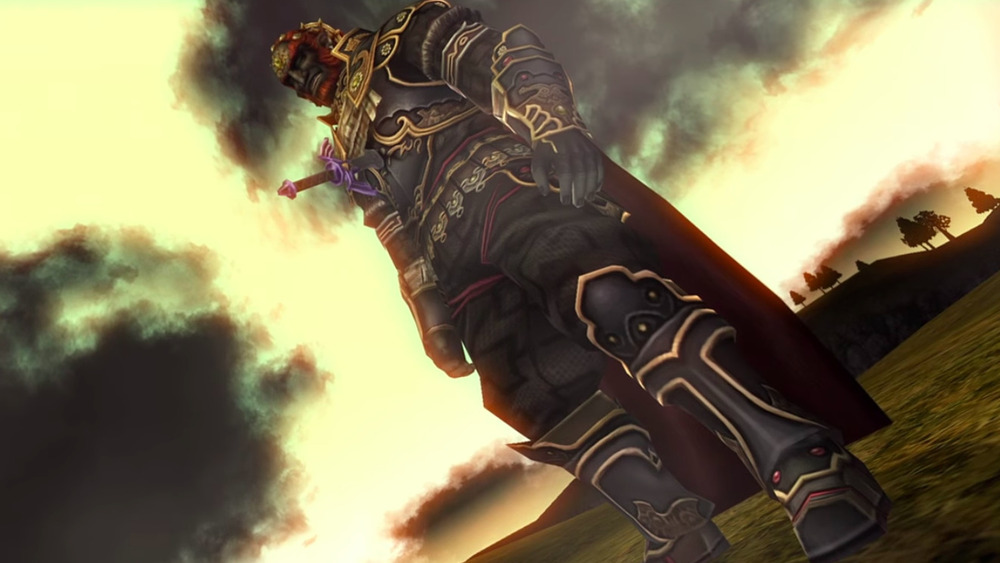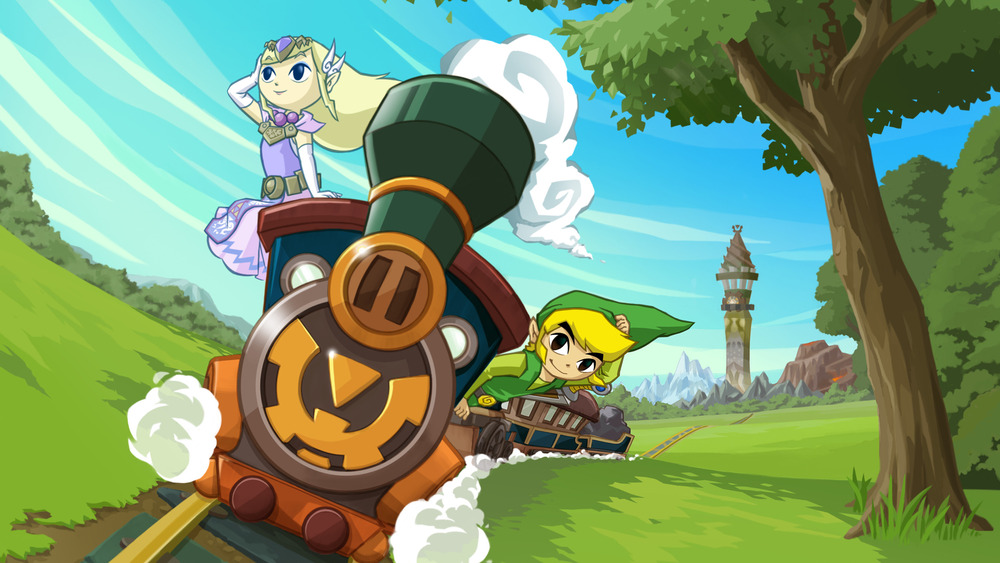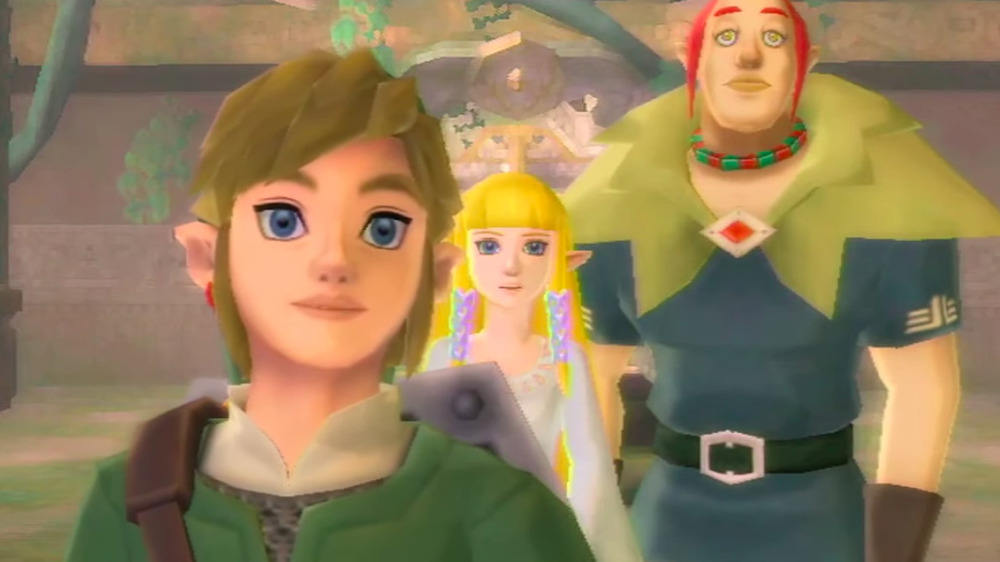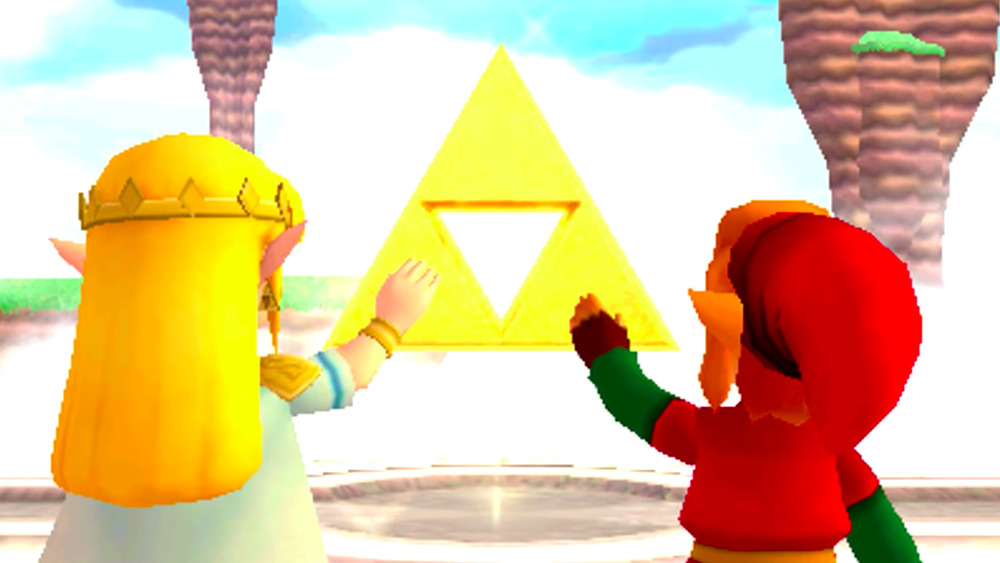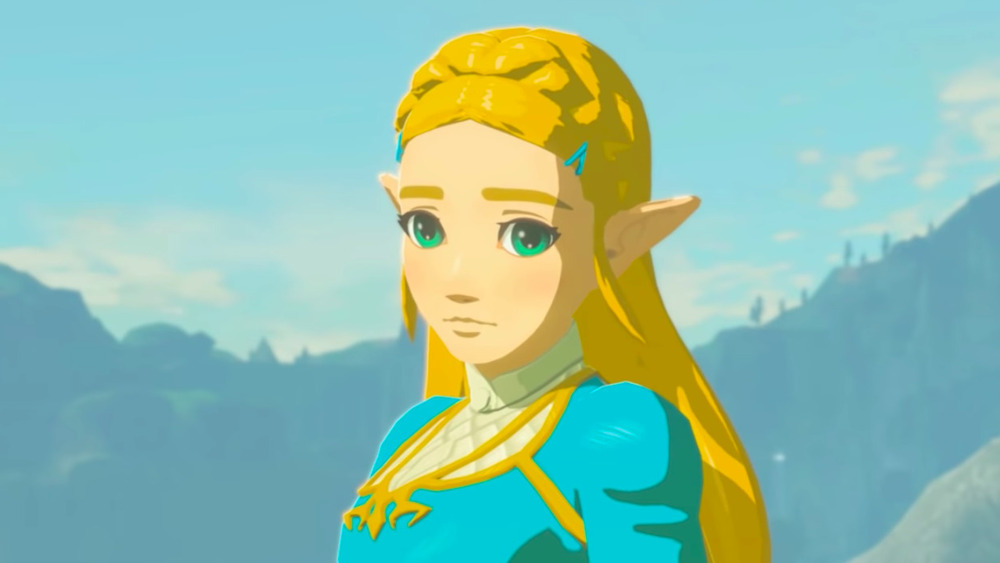The Endings Of Every Zelda Game Explained
We may receive a commission on purchases made from links.
The Legend of Zelda has been a household name since the late '80s, conjuring up memories of incredible adventures and dangerous monsters in the land of Hyrule. Since the beginning, each game has featured a hero rising up to stop the forces that threaten the kingdom, emerging victorious and proving that a good and courageous heart will always triumph against evil.
The rebirth of good and evil is a never-ending cycle in the Zelda series, and though the stories often revolve around the reincarnations of the same hero, princess, and villain, the endings often have different impacts on the series as a whole. Zelda is known for its branching timeline, with the conclusion of each title either explaining or foreshadowing another.
The connections can be difficult to spot if you're not familiar with the series. Let's take a look at the endings of every Zelda game in further depth and explore what they mean for the series.
Note: this article contains major spoilers for the Zelda series!
The Legend of Zelda set the stage for the series
The original Legend of Zelda ends with Link defeating the Demon King Ganon and rescuing Princess Zelda and Hyrule from his clutches. It's pretty basic as far as Zelda endings go, but this simple game had a huge impact on the rest of the series.
Though much of the series' lore was yet to be established, The Legend of Zelda introduces the basic components that would go on to be the core concepts of all future Zelda games. It also proved that there was room for an adventure series on the market. The Legend of Zelda was developed alongside Super Mario Bros. (Nintendo even referred to it as "Adventure Mario" before finding a permanent title) based on the sense of wonder creator Shigeru Miyamoto felt exploring the countryside around his home. Miyamoto explained that "many people dream of being heroes" and that he wanted players to "grow together with Link" as he goes from a regular boy to a hero guided by destiny.
The motivation to immerse players in the land of Hyrule and encourage their imaginative, adventurous spirits is present at the core of every Zelda game, and fans have the first installment to thank for setting that precedent.
The Adventure of Link makes Link a lovable hero
Zelda 2: The Adventure of Link doesn't add too much to the series as a whole, but it gives players a bit more of a story to follow on their adventure. According to the game's manual, Zelda was cursed into a deep sleep after she refused to give up the power of the Triforce. After hearing of her fate, Link quests to complete the Triforce and uses its power to awaken Zelda from her slumber.
While the game does offer a more fleshed out story and some background for the kingdom of Hyrule, the main impact it has on the series is its characterization of Link. Sure, he's still the same silent hero of the first game, but it shows his willingness to step up any time he's needed. Ganon is no longer threatening Hyrule, and the sleeping princess isn't the same one he rescued in the first game — he simply hears of a damsel in distress and steps up to help.
He's rewarded for his troubles — the restored princess thanks Link with a kiss, making The Adventure of Link the first game in the series to hint at a romantic relationship between Link and Zelda.
A Link to the Past breathes new life (and lore) into Zelda
A Link to the Past closes with another victory for our hero. After Link rescues Princess Zelda and the six maidens, he thwarts Ganon's impending return and uses the power of the recovered Triforce to restore the Dark World back to its former glory as the Golden World (or the Sacred Realm, depending on your knowledge of the Zelda mythology).
The game's ending stands out due to its massive expansion of the Zelda world, lore, and story. Nintendo's increased budget (and the improved capabilities of the SNES) meant that developers could add more intrigue to their little adventure game. Many of the elements they introduced would go on to become series staples — the Master Sword makes its first appearance, the maidens set the precedent for the seven Sages that appear in later installments, and the idea of the Dark World appears in various iterations throughout the series.
Perhaps the most impactful change is that of Princess Zelda herself. Giving the princess a greater role in the story solidified her importance in the cycle of good and evil that drives the Zelda series as a whole.
Link's Awakening made the series weird and musical
Link's Awakening may end with the reveal that Link's adventures in Koholint were nothing more than a dream (or were they?), but his quest to awaken the Wind Fish carry greater implications for the Zelda series than it may seem at first glance.
Director Takashi Tezuka reported that developing Link's Awakening felt more like making "a parody of Zelda." The script reads like more of a Zelda spin-off as a result, with a stranger world and quirkier characters than appear in other titles. The show Twin Peaks inspired the team's interest in "suspicious," small-town characters, a style that would appear in other Zelda games down the line.
The game's impact isn't limited only to its strange characters. While The Legend of Zelda's overworld theme was already iconic by the time Link's Awakening was released in 1993, diegetic music had not yet made its major debut in the series. It's not until Link's Awakening that Link begins using music as a mechanic, going so far as to need a special song to awaken the Wind Fish and finish the game.
Ocarina of Time splits the Zelda timeline into three
Though Ocarina of Time had a huge impact on the Zelda franchise for multiple reasons (not the least of which being its shift to 3D gameplay), its story alone changed the entire course and structure of the series as a whole.
After Link defeats Ganon atop Hyrule Castle, Princess Zelda rewards his bravery and dedication by sending him back in time, allowing him to live through the childhood he lost during his seven-year respite in the Sacred Realm. Link disappears from the ruined Hyrule while Zelda stays behind to restore her kingdom, and awakens in the Temple of Time as a child. He rushes to Hyrule Castle to warn Zelda of Ganondorf's impending takeover, stopping Hyrule's ruin before it ever happens.
This is the point at which the Zelda timeline splits into three — the timeline of the Hyrule that Adult Link leaves behind, the new timeline created when Young Link preemptively stops Ganondorf's invasion, and the dark timeline created if Link is killed during his quest.
Most Zelda games take place in one of these three timelines, and their lore reflects this. Each branch has its own version of Ganon or Ganondorf and references the events of Ocarina of Time depending on how events unfolded in its corresponding timeline.
Majora's Mask has a beautifully tragic tone
Majora's Mask is one of the darkest Zelda games in the series, but it also carries one of the most hopeful messages. The game's driving theme is closure, something that Link himself sadly lacks. Having been sent back in time, he's the only one in this timeline that remembers the full events of Ocarina of Time.
Grief and closure are such prominent themes in the story that some fans theorize that Link himself has died and is processing his own death in a land that strangely echoes Hyrule. Grief haunts the characters of Termina, and the story reflects the stages of grief as Link uses his masks to help each of these characters find acceptance in their loss.
This is especially true of Skull Kid, who lashes out at the loss of his friends and ultimately ends up corrupted by Majora's Mask. When Link defeats Majora, he helps Skull Kid realize that just because he's apart from his friends doesn't mean he's lost them completely. He reveals that he's the same Skull Kid Link met in the Kokiri Forest, helping Link to realize he's not completely lost his friends, either. They bid each other a cheerful goodbye as Link resumes his search for Navi.
Oracle of Seasons and Ages have alternate endings
Oracle of Seasons and Oracle of Ages are relatively similar games that likewise have relatively similar endings. Oracle of Seasons concludes with Link collecting the Eight Essences of Nature and rescuing the Oracle Din from the clutches of the evil Onox. In Oracle of Ages, Link uses the Essences of Time to rescue Nayru from the sorceress Veran. Both games hint at a greater hardship yet to come, which seems like a strange place to end things when played individually.
The key is to play these games not individually, but as sequels to one another. After completing one of the games (the order doesn't matter), players reveal a special code that can be submitted when playing the other game. This code unlocks additional content at the end of the game — the sorceress Twinrova kidnaps Princess Zelda and attempts to resurrect Ganon, and Link must stop the demon king in order to save Hyrule, Holodrum, and Labrynna from evil.
Nintendo originally planned to release a third game, but the idea was ultimately scrapped. The ultimate ending of the game may have played out even more differently with the introduction of a third story!
Four Swords Adventures reincarnates Ganondorf
Four Swords and Four Swords Adventures likewise have similar endings, but there are a few key differences between them. Rather than being a companion game, Four Swords Adventures is a sequel to Four Swords that takes place ages after the events of its predecessor, and has a slightly different impact on the Zelda lore.
In Four Swords, Link pulls the Four Sword from its pedestal and splits his body in order to rescue Princess Zelda from the Wind Sorcerer Vaati. In Four Swords Adventures, it's actually Ganon that threatens Hyrule. Link must intentionally free Vaati by pulling the sword, and must defeat both the sorcerer and Ganon in order to rescue Zelda and the other kidnapped maidens.
Four Swords Adventures is set in the Child Timeline, long after Ganondorf was imprisoned and executed for his crimes against Hyrule. As a result, it's the first game in the series to canonically reincarnate Ganon — his appearance in other games are the result of the same man being resurrected or breaking free of his prison in a different branch of the timeline. Four Swords Adventures continues the cycle of reincarnation introduced in Skyward Sword.
Wind Waker bids farewell to Hyrule
As it turns out, the Hyrule of the Adult Timeline doesn't exactly meet a happy end. The kingdom is flooded, and although King Daphnes manages to keep it preserved beneath the waves, he eventually lets it be washed away to stop Ganondorf from getting his hands on the Triforce.
Almost every game in the Zelda series introduces a new version of Hyrule kingdom and its heroes, but Wind Waker takes the theme of new beginnings to the next level. Link is the first to take on the mantle of the Hero in centuries, and his decision to leave his tiny island home at the start of his adventure is mirrored at the game's end when he ventures into uncharted seas to find a new continent. Hyrule is lost to the ocean depths, but his search signals a hopeful future where the people of the once-great kingdom can be united again, instead of scattered to the winds.
The Minish Cap provides some much-needed context
The ending of The Minish Cap plays an important role in the Zelda series in that it provides background for Vaati and the Four Sword. As of Four Swords and Four Swords Adventures, Vaati is hardly a well-developed character — he's introduced mostly as an evil nuisance out to bother Hyrule and its princess. He'd already been defeated and sealed away as of Four Swords, so The Minish Cap fills in the gaps by telling the story of how he ended up sealed away in the first place.
The implications of this game only extend so far as the Four Sword trilogy is concerned — Vaati and the sword only appear in these three games, and aren't formally referenced in any other title. What's important about the story, however, is that it shows Zelda's villains don't necessarily have to be connected to Ganon to provide a legitimate threat to Hyrule.
In most cases, the enemies turn out to be either Ganon himself or one of his minions. Vaati being evil of his own accord is an interesting change of pace. Since he only appears as a monstrous wind creature in Four Swords and Four Swords Adventures, giving him a humanoid appearance and a backstory in The Minish Cap gives him a bit more significance in the Zelda canon and makes him a more important character in his own right.
Twilight Princess's villains face consequences
Twilight Princess's dark ending fits its somber tone. Ganondorf is killed — not implicitly or offscreen, but with a stab wound to the chest courtesy of the Master Sword. As Ganondorf grows steadily weaker, the Triforce fades from his hand and he has a vision of the usurper king Zant looking down on him. Zant watches him for a moment, then snaps his own neck. In the same moment, Ganondorf finally dies.
Fans have long speculated what this final scene actually means. Some believe it's an act of defiance and self-sacrifice from Zant, suggesting that his defeat finally cured him of his insanity and that he gave up his own chance at immortality for the sake of his people. Others argue it's more symbolic, with Ganondorf seeing Zant's death as a sign that his plan has been thwarted and he can't escape death forever.
Both characters face deeply personal consequences for their actions. Midna destroys Zant for taking over the Twilight Realm and corrupting her people, but Ganondorf's crimes are far greater. Twilight Princess takes place in the Child Timeline, meaning this is the same Ganondorf that conspired to take over Hyrule. He may have delayed his execution for a few hundred years, but he gets his comeuppance in the end.
Phantom Hourglass and Spirit Tracks continue the theme of new beginnings
Wind Waker provided a fresh start to the series with the loss of Hyrule Kingdom, and both Phantom Hourglass and Spirit Tracks do their part to introduce players to a new world. Link continues his adventures on the high seas, rescuing Tetra from the clutches of Bellum before discovering a new continent and founding the new Kingdom of Hyrule, and the hero cycle begins anew.
While somewhat unremarkable on their own, the sequels work together to create an entirely unique branch of the Zelda timeline. The controversial cel-shaded style is present in all three games, and the princesses are all fiery and ready to fight alongside Link for the sake of their kingdom (at least in Spirit Tracks, as Tetra was stuck in statue form for most of Phantom Hourglass). Most importantly, however, the heroes' dedication and unwavering courage in their final conflicts show a dedication to the new kingdom and its people.
Skyward Sword kickstarts the whole series
The ending of Skyward Sword has possibly the greatest implications for the rest of the Zelda series, as it provides the origin story for Zelda's divine heritage, the Master Sword, and the cycle of reincarnation between the bearers of the Triforce. As Demise perishes, he curses Link and Zelda's descendants to always be haunted by his hatred.
Though this is naturally assumed to be Ganon/Ganondorf (since Demise's humanoid form looks a lot like Ganondorf), it's never made explicitly clear. Demise's "hatred" could be manifest in any of the villains Link and Zelda face over their many reincarnations, which would make the curse consistent across the branching timelines.
As shown in Hyrule Historia, developers worked hard to create lore befitting the first canonical entry in the Zelda timeline. The story established a lot of small details that fleshed out the world and made it come to life. The ending itself is no exception, leaving Link and Zelda on the surface to found the Kingdom of Hyrule that would go on to be the setting for the remainder of the games.
A Link Between Worlds shows the power of the Triforce in good hands
A Link Between Worlds closes with Link restoring Zelda and Hilda back to their human forms. Link and Zelda return to Hyrule, but upon waking in their own Sacred Realm, they use the power of their Triforce to restore Lorule's Triforce and bring stability back to the broken kingdom.
It's a compassionate act that shows the true power of a good heart. While Hilda's actions would have caused the ultimate destruction of Hyrule, her motives are understandable — Zelda knows what it means to make difficult choices for the sake of her people, and Link has spent enough time in Lorule to know that its people deserve a better life. The Triforce is most often sought for selfish means and destructive power, as seen time and time again with Ganon's evil machinations. Seeing it used by a pure heart in an act of unconditional forgiveness and empathy speaks to the true heart of the Zelda series — a true hero will help people in need simply because it's the right thing to do.
Breath of the Wild hints at the future
After Calamity Ganon is defeated, there are a few possible endings to Breath of the Wild — the exact endings you see depends on how much of the game you've completed. The full ending shows the spirits of the Champions and the King of Hyrule watching on in approval as Link and Zelda venture out into Hyrule together, and expressing relief that their quest is finally over. Zelda tells Link that she wants to help rebuild Hyrule, hinting at what may come in Breath of the Wild 2.
The game leaves a gentle ellipses on Link and Zelda's relationship at the end of the game. Recovering Link's lost memories shows that their friendship was strained for a long time — Zelda saw Link as a symbol of all her failures, but also as a constant companion to her growth. Saving his life was the catalyst that unlocked her divine powers, so her fear that he may not remember her and her wish that they can work together to rebuild her kingdom strikes a hopeful note that good things are yet to come in future Zelda titles.

